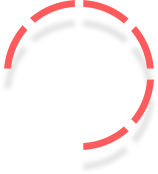What is PCB Designing?




PCB Designing (Printed Circuit Board Designing) is the process of creating the layout and structure of a circuit board that connects and supports electronic components using conductive tracks, pads, and other features.
PCB designing involves:
Creating the schematic – A blueprint of the electrical connections.
Laying out the PCB – Translating the schematic into a physical layout with traces, vias, and pads.
Preparing manufacturing files – Generating Gerber files and BOM for production.
Requirements Gathering
Define functionality, voltage/current specs, size constraints.
Schematic Design
Use EDA software (like KiCad, Altium, Eagle) to draw the circuit.
Component Placement
Strategically place components to minimize trace lengths and interference.
Routing
Connect components using traces. Consider signal integrity and power distribution.
Design Rule Check (DRC)
Verify clearance, trace width, via sizes, and more.
Simulation (optional)
Analyze signal integrity, power integrity, thermal behavior.
Generate Output Files
Gerber files, drill files, pick-and-place, and BOM.
Fabrication and Assembly
Send files to a manufacturer and assemble components.
Requirements gathering
Schematic design
Component selection
PCB layout and routing
Design rule checks (DRC)
Gerber file generation
Fabrication and assembly
Testing and debugging
Popular EDA Tools:
KiCad (Free, open source)
Altium Designer (Professional)
Eagle (Entry to mid-level)
EasyEDA (Web-based)
Benefits of PCB Designing:
Compact and efficient circuit layout
Reliable electrical connections
Customizable shape and size for any device
Improved performance and signal integrity
Easier troubleshooting and debugging
Ideal for automated, large-scale production
Cost-effective for both prototyping and manufacturing
Reusable designs for future projects
Simplifies assembly and component placement
Supports detailed documentation and labeling
Better thermal management and heat dissipation
Reduces risk of short circuits and wiring errors
Supports compliance with industry standards (e.g., RoHS, IPC)
Improved packaging and integration into products
Facilitates testing with built-in test points.
Are you ready to transform ideas into real, working electronics? Dive into the fascinating world of PCB Designing at Tech Booster and build the skills that power smartphones, robotics, wearables, and more!



